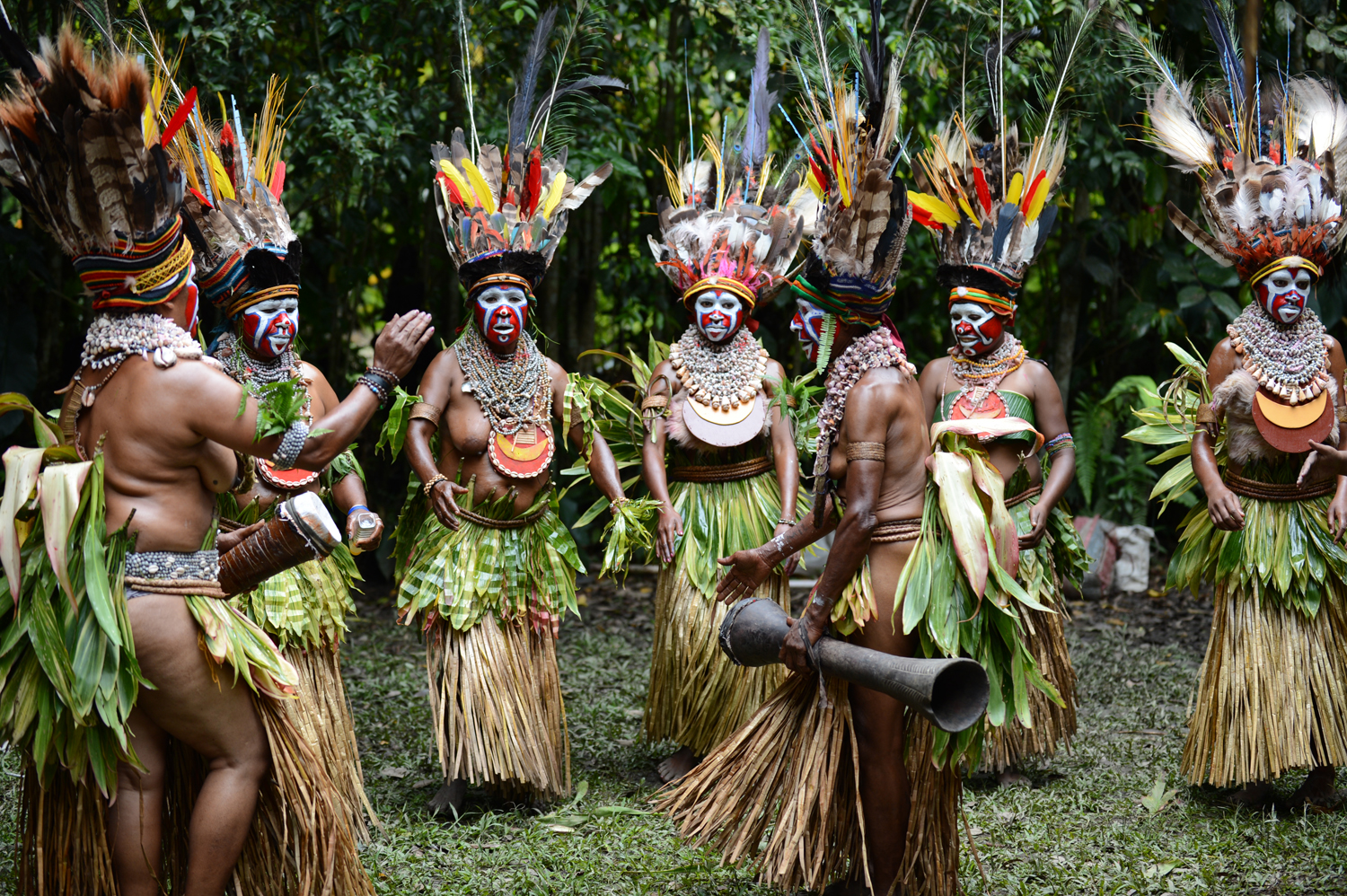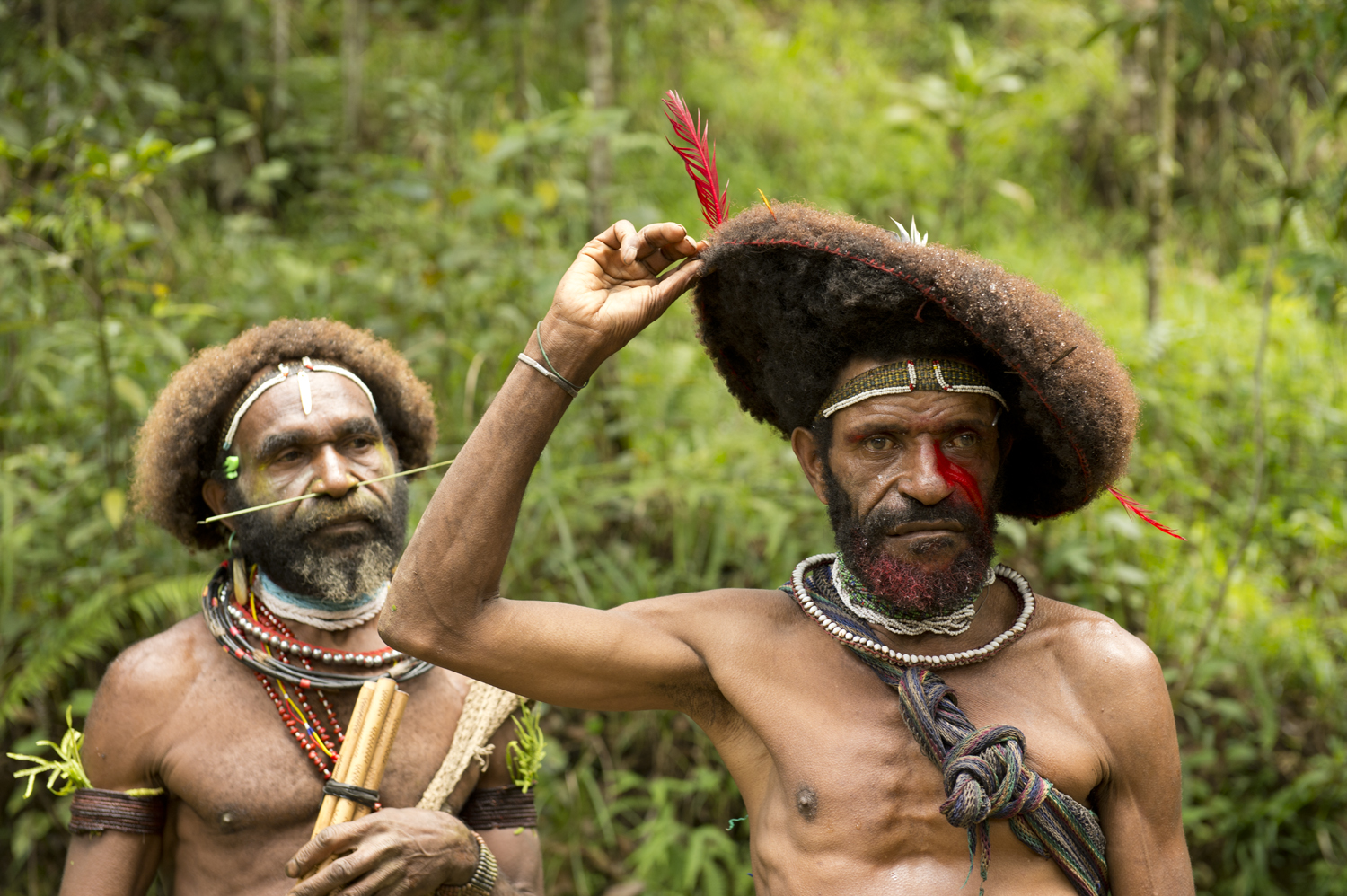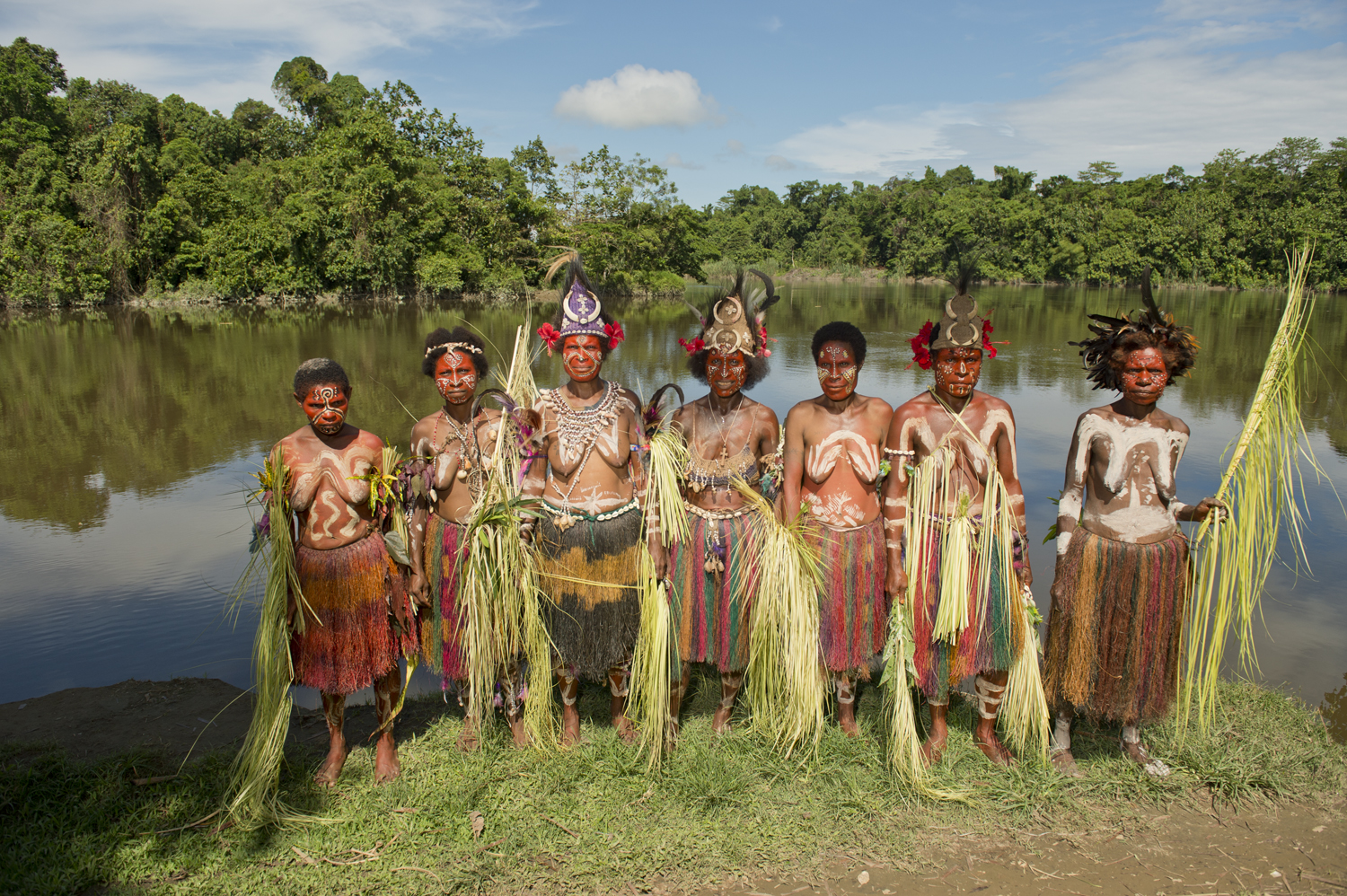papua new guinea
8 DAYS // AUGUST 2020
Facts About This Quest
Please keep in mind that this Quest is suitable for healthy and fit individuals. Physical strength is essential for the moderate hikes we will do in semi-rugged terrain as well as getting on and off of small boats.
Geography
Papua New Guinea is a mountainous country with valleys, rivers, tropical forests, mangrove swamps, coastal plains and coral islands. It is estimated that there are around nine thousand species of plants on Papua New Guinea; many, such as orchids, are found in the rainforest. The rainforest is also home to many species of birds. The Bird of Paradise is the country's national emblem. Other wildlife includes bats, tree kangaroos, spiny aneaters, crocodiles, snakes and turtles. The Queen Alexandra Birdwing, the world's largest butterfly, also lives in Papua New Guinea.
Architecture
Colonial architecture can still be seen in Port Moresby, a port town that developed into Papua New Guinea's capital city. High rise office blocks tower over the newer part of the city and Parliament House, designed around the theme of a traditional Spirit House, is a combination of the old and the new. Not far from the modern centre, the village of Hanuabada, destroyed during WWII, has been rebuilt with traditional houses raised on stilts above the water. Stilt houses, constructed using posts able to withstand water, are a popular style of building in Papua New Guinea.
Currency
Kina cash can be acquired at the banks of most international ports of departure to Papua New Guinea. It is strongly recommended you acquire your Kina cash at these banks prior to departing for Papua New Guinea. Ensure you request small denominations, K2, K5, and K10, NOT K20 or K50 notes. Smaller denominations are best for purchasing art in the villages. Often, villagers will not be able to give change for larger notes. The Wilderness Lodges are not able to change K50 notes to smaller denominations.
There is a bank at the Port Moresby International Airport and all major towns, but itineraries and air schedules frequently do not allow time to visit the banks. The Wilderness Lodges have some cash, but this is greatly limited and exchange rates are not as good as the banks.
People
The people are mostly descendants of the Papuans – Melanesians closely related to the islanders of Fiji, New Caledonia and Vanuatu. There are just over 5 million people living in Papua New Guinea – more than a third of them in the rugged Highlands. The traditional Melanesian cultures are kept alive in elaborate rituals that accompany deaths, feasts, marriages, compensation ceremonies and initiation rites. Variations in village construction, dialect and dress are common in country areas while annual Sing Sing shows, part of the Papua New Guinea Cultural Events Calendar, see villagers from around the country demonstrate their singing, dancing and elaborate bilas (traditional costumes). The shows at Goroka and Mount Hagen are among the country's most impressive, attracting thousands of spectators to Papua New Guinea each year.
emember to be respectful of local customs and religious beliefs, and do not wander off alone – always take a local guide with you. Most land is owned by a community or village, which means visitors will need to ask for permission to enter.
Language
The official languages in Papua New Guinea are English, Neo Melanesian (tok pisin) and Motu. Additionally, there more than 800 local languages - and many more minor dialects. Pidgin (Tok Pisin) is common to most Papua New Guineans, and learning a few words can be handy, especially when traveling in more remote areas.
Food
Staple foods in Papua New Guinea are taro roots, bananas, sweet potatoes and sago (palm). A variety of leafy vegetables are also available. Fish and other seafood supplement the diet and chickens are kept. Often, a whole pig is roasted for traditional feasts. Fresh fruit such as coconuts, guavas, mangoes, papayas, passion fruits, pineapples and watermelons are grown. Fruit juice, coconut juice and soft drinks are available. We recommend that only water bottled water be consumed.
Electricity
Electricity in Papua New Guinea is 240 Volts, alternating at 50 cycles per second. If you travel to Papua New Guinea with a device that does not accept 240 Volts at 50 Hertz, you will need a voltage converter. Outlets in Papua New Guinea generally accept 1 type of plug: V-shaped flat prongs.
Weather & Clothing
The climate of Papua New Guinea is tropical with northwest monsoons from December to March and southeast monsoons from May to October. Rainfall varies throughout the islands and temperature varies according to altitude.
The wet and dry seasons in PNG are not as black and white as elsewhere in Asia. In practice, for most places the wet just means it is more likely to rain, the dry that it’s less likely. Temperatures rarely get too hot but the humidity is always high and can be oppressing. Rainfall is generally heavy but varies greatly.
The island provinces have a more steady climate, with the ‘dry’ season from December to late May having milder temperatures (about 21°C to 28°C during the day) and infrequent, light rainfall. The heat and humidity rise during the ‘wet’ monsoon season, from late May to December. Cyclones can blow between January and April.
Health & Medical
If you require medicines containing habit-forming drugs or narcotics (diuretics, depressants, stimulants, heart drugs, tranquilizers, sleeping pills, etc.) you should have a prescription from your physician advising that the medicine is being used under a doctor's direction and is necessary for your physical well being. All prescription drugs must be carried in their original containers.
Required & recommended vaccinations
When traveling to PNG, vaccination for yellow fever (and the certificate to prove it) is required if you are entering from a yellow fever-endemic country. Vaccinations are also recommended for hepatitis A, hepatitis B, typhoid fever and, for some visitors, Japanese B encephalitis. We recommend you consult with your travel doctor to address any concerns prior to trip.
Visas
Visas can be purchased upon arrival at Port Moresby, Papua New Guinea.
Luggage Restrictions
The maximum baggage allowance for our chartered flights is 22 pounds per person + one carry-on bag no greater than 11 pounds.
Large, hard sided suitcases are NOT permitted on chartered aircrafts. These are the two flights that operate between our lodges.
The regular scheduled flights have 35 lbs weight restrictions for your check in luggage. Every lodge will have laundry services available.




